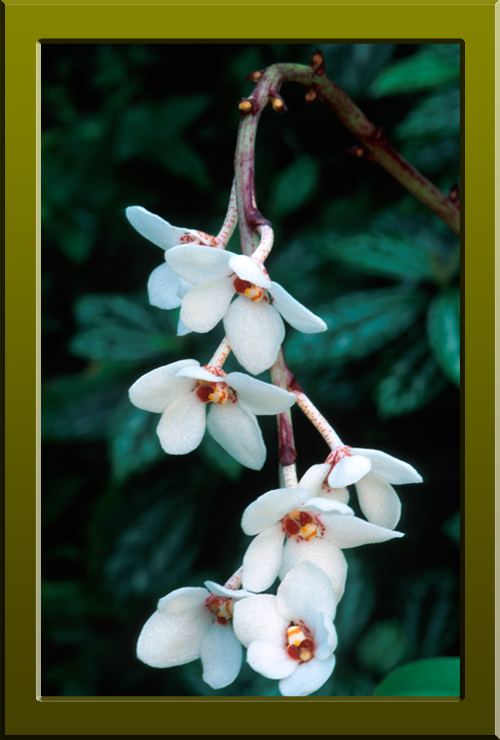Queenslandian BioProvince
This BioProvince (as defined by Armen Takhtajan) comprises eastern Australia (including the Great Dividing Range) from eastern parts of the Cape York Peninsula south to the north coast of New South Wales. The geology is complex and varied while the climate can be described as subtropical. The flora is very distinctive with at least two endemic families (Austrobaileyaceae and Doryanthaceae) and about 95 endemic genera including Athertonia, Austromuellera, Baileyoxylon, Bowenia, Buckinghamia, Cardwellia, Carnarvonia, Darlingia, Fitzalania, Haplostichanthus, Hexaspora, Hollandaea, Irvingbaileya, Mobilabium, Motherwellia, Musgravea, Neorites, Neoroepera, Neostrearia, Neurosoria, Normanbya, Opisthiolepis, Ostrearia, Paraceterach, Peripentadenia, Piptocalyx, Placospermum, Platyzoma, Pteridoblechnum, Schistocarpaea and the near endemic Lepidozamia. The latter is also found in the Southeast Australian BioProvince. The Queensland BioProvince has more plant species than any other part of Australia. One endemic plant, Idiospermum australiense, is regarded as one of the most primitive flowering plants on the planet, having survived in the Daintree Rainforest of Queensland for about 120 million years.
The following accounts for this BioProvince have been written or will be written with particular reference to endemic and locally important species. Accounts available are displayed in green or yellow. Those displayed in red are either in the pipeline or awaiting expert contributions.
| Index |
|---|
| Major Ecosystems |
| Endemic Vascular Plant Flora |
| Bryophyte Flora |
| Fungus Flora |
| Lichen Flora |
| Invertebrate Fauna |
| Amphibian Fauna |
| Reptile Fauna |
| Bird Fauna |
| Mammal Fauna |
| Conservation Status |

Sarcochilus hartmanii (Orchidaceae) an orchid native to the tablelands of Queensland but now classed as vulnerable in the wild (Copyright © 2010 Peter Martin Rhind).


